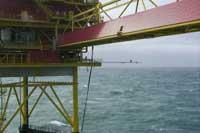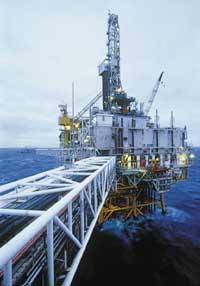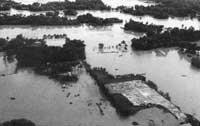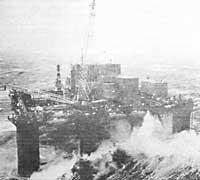Carbon dioxide, better bury than take off
2002/09/11 Galarraga Aiestaran, Ana - Elhuyar Zientzia
On the Sleiper Field platform, which exploits North Sea gas, an experiment has been underway since 1996. There they extract methane under the sea and bury the carbon dioxide that is obtained once separated. After so many years of research, researchers have shown that carbon dioxide is buried. Precisely, at a depth of one kilometer below the bottom of the sea, carbon dioxide remains like a large bubble, under a layer of sedimentary rocks.

Similar solutions have previously been proposed to solve the problem of carbon dioxide generated by fossil fuels. They have now demonstrated their good results in the North Sea and consider that in addition to being useful for oil and gas extraction companies, it can also be valid for electricity producers. In fact, according to British geologists at Sleiper Field, it is enough to collect and bury in the right place the carbon dioxide generated.
The experiment was conducted under the direction of a Norwegian company. Using conventional technology, the carbon dioxide containing methane (9%) is separated and sent as a slightly lighter fluid than water under the seabed. In total, 5 million tons of carbon dioxide have been buried here.
To demonstrate that it is safe in case of earthquake, computer models have been used to ensure that there is no risk of carbon dioxide expulsion. In addition, they say that in the North Sea there are many places conducive to the collection of carbon dioxide; they believe that places with oil and gas can be adequate after checking that the gas does not deviate.

Gai honi buruzko eduki gehiago
Elhuyarrek garatutako teknologia





